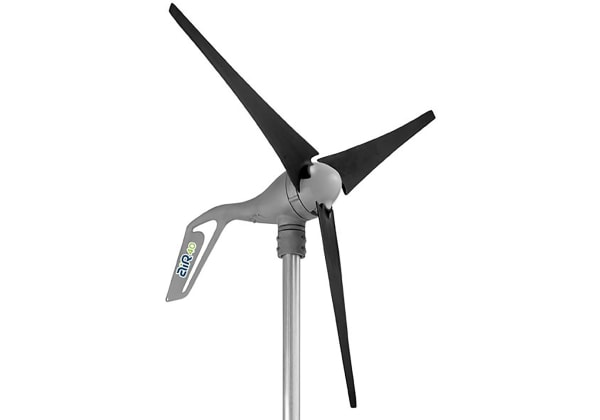- Published 24 Jun 2024
- Last Modified 24 Jun 2024
- 6 min
Solar Panel Water Heating
Solar thermal was one of the first renewable energy technologies to be widely used on a domestic scale in the UK and still has an important role to play in decarbonising heat. This guide examines solar thermal panels: what are they, how they work, and their benefits and drawbacks.

Reviewed by David Carmichael, Solution Engineer (May 2024)
Along with solar photovoltaics, solar thermal panels have come into sharp focus in recent years in the battle against climate change as a means of heating water cheaply without generating carbon emissions. Let’s take a closer look at this technology and some of its advantages and disadvantages.
What is Solar Thermal Heating?
What is solar thermal? To start, it’s important to understand the difference between solar PV and solar thermal. While solar photovoltaic panels take sunlight and convert it into electricity, solar thermal panels capture heat from sunlight.
Solar thermal systems feature roof-mounted solar water heating panels or tubular solar collectors. They collect energy from the sun’s energy to heat water.
Solar Hot Water
What is solar thermal heating? Solar thermal systems – even in the rainy, cloudy, and increasingly variable weather of the UK – are capable of providing a lot of the hot water a business or other commercial premises needs. Although it is also possible for these systems to provide some space heating, this is usually only a small amount of the total heating required.
So, the principal benefit of solar water heating panels is in providing hot water and installing solar thermal water heating can be cost-effective in businesses that require a lot of it.
Solar Collectors
Solar thermal collectors may be flat solar thermal panels or vacuum tube solar collectors. It’s these devices that collect the sun’s energy for heating water.
Flat Plate Collectors
Flat plate solar collectors are heat exchangers – usually a large sheet of copper or aluminium painted black – that capture solar energy. That energy is used to heat water. Flat plate solar collectors are simple, low-cost, and easy to mount on the roof.
Vacuum Tube Solar Collectors
Vacuum tube solar collectors comprise sealed glass tubes. They are roof-mounted in a row (or rows) of parallel tubes on a frame or frames. Because of the cylindrical shape of the tubes, sunlight always hits them at a perpendicular angle. This makes vacuum tube solar collectors (also known as evacuated tube collectors) more efficient than flat collectors when sunlight is low or in wintry conditions.
How Does Solar Thermal Work?
So how does solar thermal work? Both types of solar collectors use the sun’s energy to heat water, but they work in slightly different ways. Flat plate solar collectors feature copper pipes containing a heat transfer fluid, usually glycol solution or water. These copper pipes are fixed to the black aluminium or copper absorber plate. As the absorber plate increases in temperature, heat is conducted through the pipes and the water within them heats up. This water is then pumped to the building’s hot water cylinder.
Evacuated tube collectors don’t heat water directly. Each vacuum tube solar collector is two tubes in one. The tubes are made of temperature-resistant glass. They readily transmit solar radiation and absorb solar energy but reduce heat loss. Unlike flat plate collectors, water is not heated directly by the tubes. Instead, the tubes form a vacuum that functions as an insulator to greatly reduce heat loss. The tubes have heat pipes containing heat transfer fluid, and they use an indirect mechanism to heat cold water running through a heat exchanger, which then supplies a tank.
Advantages of Solar Thermal
Solar energy is free, limitless renewable energy. It doesn’t produce greenhouse gas emissions. Those using solar thermal energy can save on their electricity and gas bills and benefit the environment in the bargain. Modern systems work in all climes – even in wintry environments or at times where there is relatively little sunshine. In the summer months, the system can be relied on to provide all, or nearly all, of the hot water needed for a household. Solar thermal panels are also straightforward to install and require little maintenance.
Solar thermal systems aren’t just mounted on rooftops. They can also be installed on the ground or integrated into the built environment. As well as reducing reliance on fossil fuels, they conserve water resources by reducing reliance on water-cooled electricity generation and can even be used at an industrial scale.
Disadvantages of Solar Thermal
There are some drawbacks to solar thermal. The amount of solar energy available to power solar thermal systems changes with the seasons. This means that a conventional boiler or immersion heater is usually required along with the solar thermal system to make up the shortfall. For example, in the winter, the solar thermal system may only produce a fifth of the hot water needed. Some buildings may need planning permission to install solar thermal panels on the roof. Residences that have combi boilers will also need to install (and find the space for) a solar hot water cylinder.
There are also drawbacks to the different types of solar collectors commonly used. Flat plate collectors are cheap and easy to install, but a lot less efficient than vacuum tube solar collectors. On the other hand, evacuated tube collector solar thermal systems may be prohibitively expensive for some domestic applications. This may make them more suited to commercial or industrial uses.
Solar Thermal for Industry
Solar panels and solar thermal aren’t just of interest to savvy consumers looking to cut their bills and carbon footprint. Solar thermal panels can be used to create heat for industry, too. At an industrial or utility scale, for example, concentrating solar thermal power technologies use mirrors to concentrate sunlight on a receiver and heat fluid, much like a giant version of the solar collectors found on our rooftops.
This type of solar thermal technology is useful for generating very high temperatures in industries that require them, such as the chemicals sector. The heat can also be used to drive turbines or generate electricity.
The Future of Solar Thermal
Concentrated solar thermal power is just one part of a vision of the future for solar thermal in which it helps to decarbonise the global economy and reach net zero carbon emissions. Domestic installations of solar thermal are also expected to play a huge role. According to the IEA, there were some 250 million homes worldwide using solar thermal for water heating in 2020.
In the UK, installations have been boosted by government incentive schemes and grants. In new-build homes, solar collectors are increasingly likely to become part of the original design, too. There are also emerging technologies that may find favour in Britain, such as combined solar thermal and solar photovoltaic panels that generate both hot water and electricity.
For solar thermal, the future looks bright.
Want to prevent your solar battery from becoming overcharged? Explore our range of solar charge controllers here.
Related Articles
Related links
- Solar Technology 80W Kit Photovoltaic Solar Panel
- Phaesun Roof Duct Water Tight For Use With Solar Panel
- Central Heating Pumps
- Energy Efficiencies of Solar Panels and Solar Cells
- Air Eliminators
- A Complete Guide to LED Displays
- Wireless Charging and the Technology Behind It
- The Complete Guide to Flow Switches


